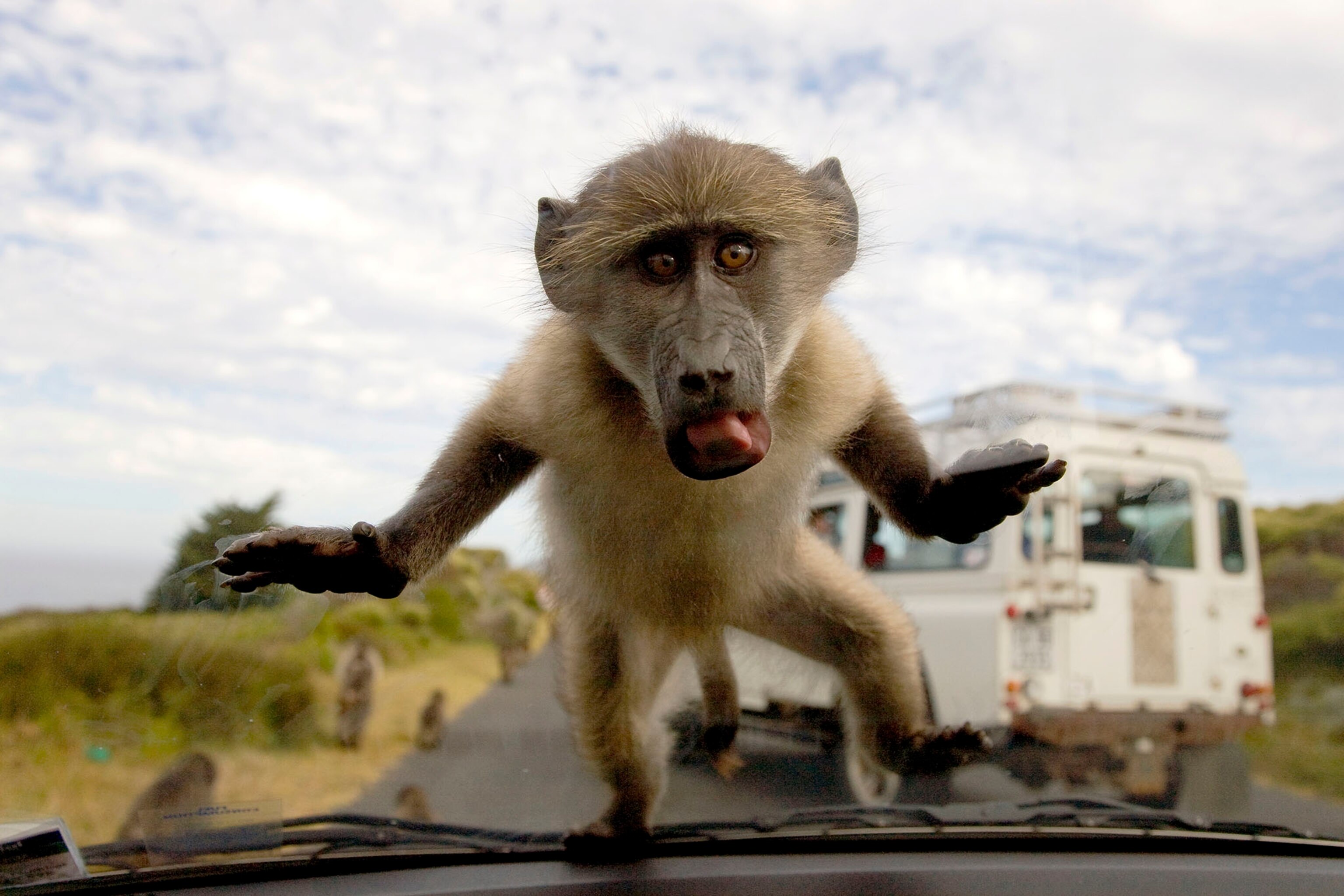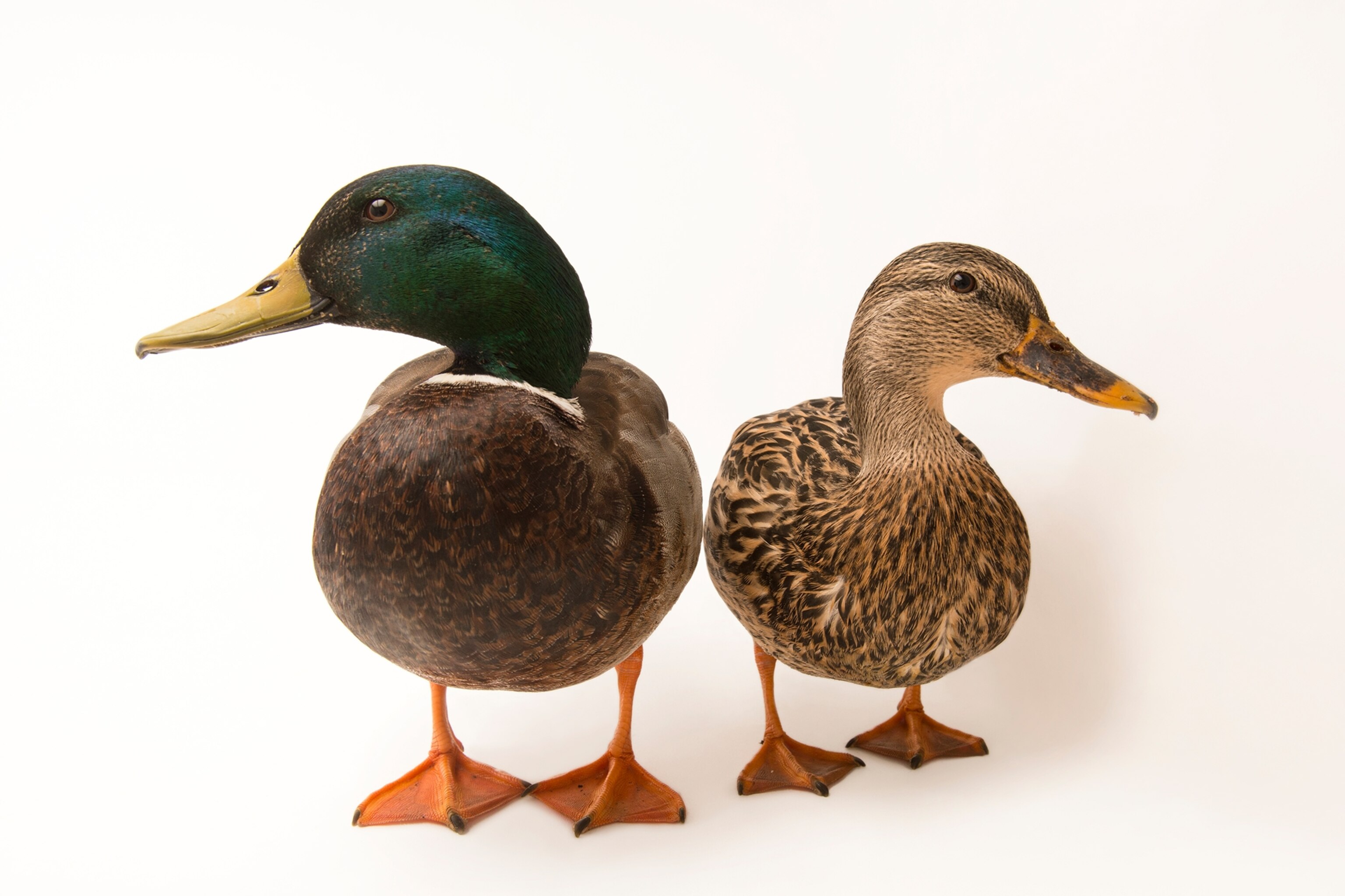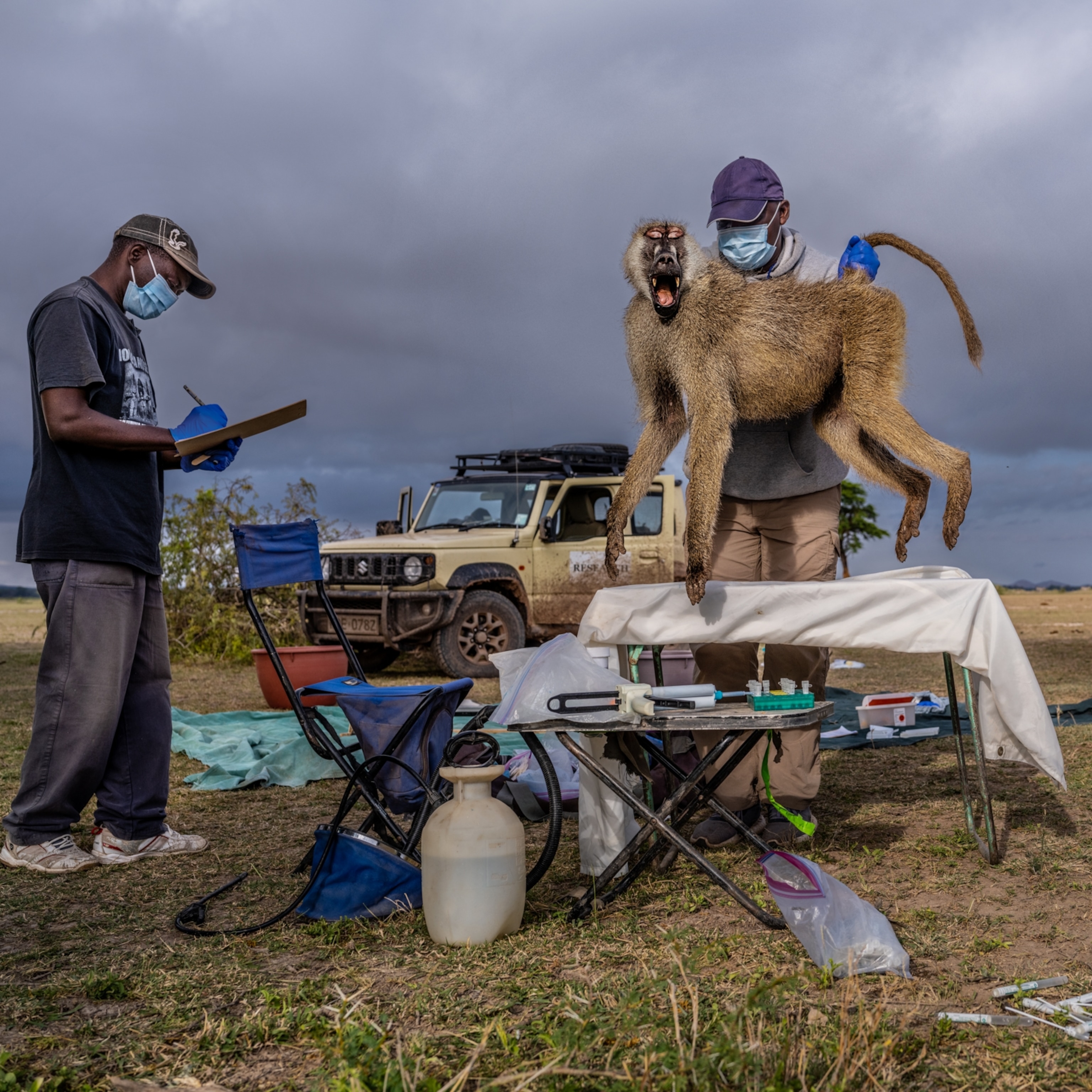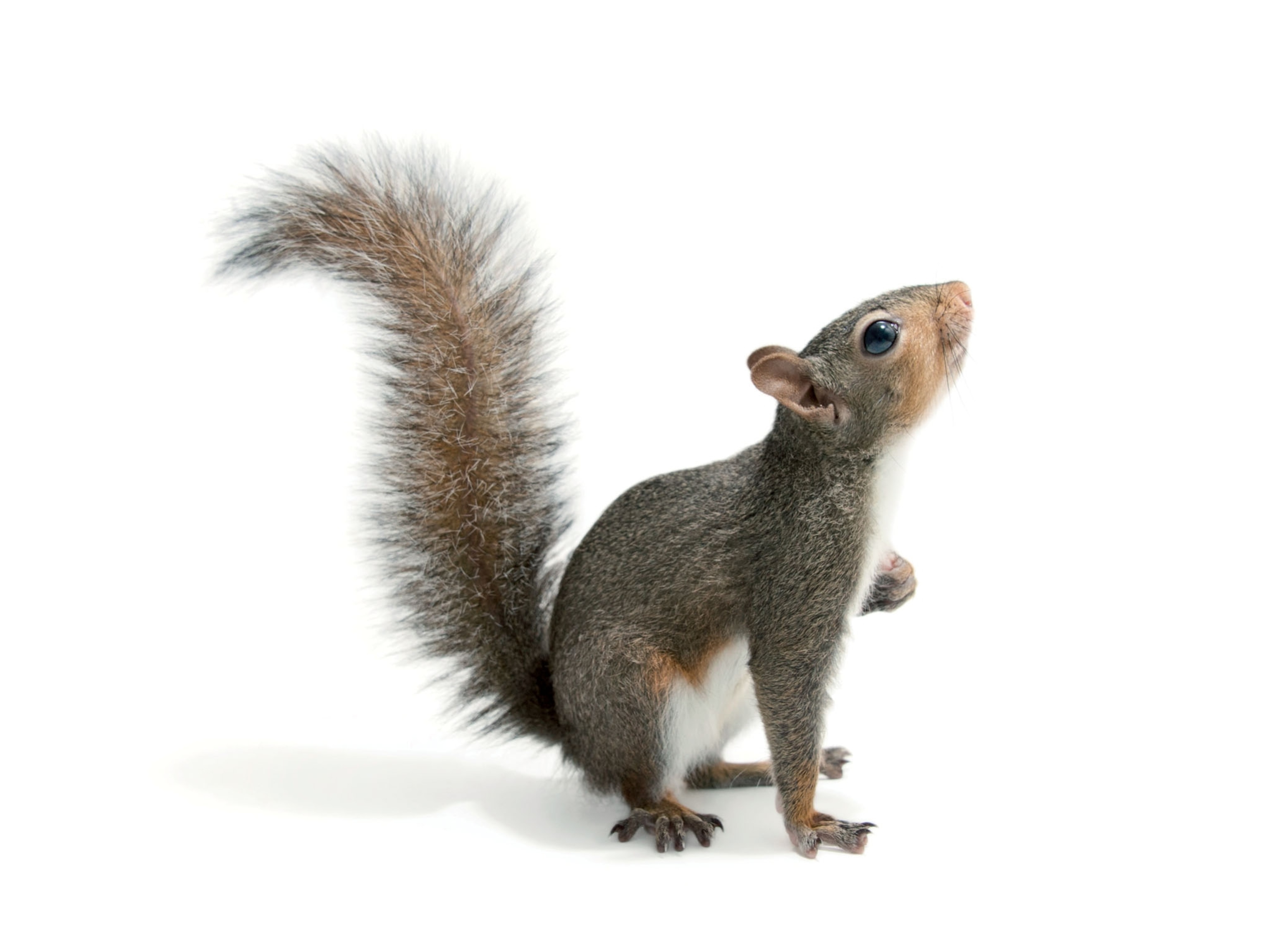
Is This the End For South Africa's Famed Urban Baboons?
Cape Town’s baboons and people aren’t getting along. Experts warn that lethal removal of males may be dooming the whole population.
Few large cities in the world can boast such natural splendor as South Africa’s Cape Town—lauded not only for its dramatic mountain and coastal landscapes but also for the wildlife living in and around it. Some of its most visible and intriguing creatures are roughly 500 chacma baboons.
According to the official Guide to South Africa website, 11 troops of the baboons (a species widely present in southern Africa) are found from the Tokai Forest in the city’s southern suburbs to Table Mountain National Park. The troops vary from a few individuals to gangs of more than a hundred.
Like most baboons, the guide says, they “mostly subsist on fruits, roots, bulbs, honey, insects and scorpions.” But exceptionally, they also mine the Cape beaches for sand hoppers and mussels—just as our human ancestors in the area did 100,000 years ago.
Baboons (like humans) are opportunists. From a baboon’s perspective, humans mean food—it’s in their houses, in waste bins, restaurants, shops, and sometimes on their person. Despite road signs warning people not to feed the baboons, tourists and tour operators have done just that to draw the animals in for close viewing. (Under the Cape Nature Conservation Laws Amendment Act of 2000, it’s illegal to feed, kill, or injure baboons.)
Not surprisingly, the Cape Town baboons have become brazen, raiding houses and restaurants—even mugging (and hurting) people carrying food.
The situation got so dire that in 2009 city authorities initiated a management plan for dealing with baboons in urban areas. A Baboon Research Unit and a Baboon Technical Team—made up of scientists from the University of Cape Town and Cape Nature, a public institution with the statutory responsibility for biodiversity conservation in the Cape Town area, as well as of national park officials—was established “to focus its research and management on baboon behaviours within Cape Town and surrounding areas.”
Research compared the Cape baboon population to others in the country, and, importantly, it concentrated on the worsening relationship between Cape Town’s baboons and their human neighbors.
In 2010 a protocol for “reducing the frequency and severity of raiding behaviour” was implemented, and all male baboons deemed a “problem” began to be trapped and killed.
Problem Not Solved
Five years later the big question is: Have the raiding tendencies of Cape Town’s baboons been solved by the removal of the so-called problem animals?
“It’s abundantly clear that they have not,” says Jenni Trethowan, of Baboon Matters Trust, a nongovernmental organization dedicated to the preservation of the animals in South Africa, who has studied and interacted with Cape Town’s baboons for two decades.
Beyond that, she says, the removal of males causes social disruption and undermines troops. “From our observations,” Trethowan says, “we believe that baboon troop growth is either stagnant or declining in numbers.”

Chacma baboon troops are dominated by alpha males. They’re the most aggressive against outside threats, and they often dictate foraging movements. Because of their dominance, they’re also often the ones identified as problems to be removed from a troop.
Junior males then fill the vacuum and compete to win the females, which can splinter a troop into smaller, more vulnerable groups. The new males tend to kill any offspring of the previous dominant male, further reducing numbers and hindering population growth. (Also see "Baby Baboon’s Frightening Encounter with Lions Ends with a Heroic Twist.")
Trethowan cites one troop on the fringes of the seaside suburb of Scarborough. It had 18 individuals in 2013. In December 2015 the dominant male was removed and killed. Today the troop has halved in number, and of the remaining nine baboons, all are females.
Without any males, even junior ones, Trethowan says, the Scarborough troop is in serious trouble. The fearful females have sought refuge in Scarborough’s neighborhoods, causing consternation among residents. Some homeowners have gone so far as to shoot at the animals.
Trethowan wants the removal of males to stop before populations decline further. And, she says, because baboons “display such an obvious range of emotions, we have to accept that they mourn too. Without doubt there should be ethical and emotional consideration given to prevent the ongoing killing of male baboons.”
New Strategy Needed
Cape Town makes a lot of money from tourism related to its natural heritage. And yet, Trethowan says, the authorities are taking few “precautionary measures to make sure that when it comes to baboons, tourists aren’t impacting negatively on our wildlife. It simply isn’t good enough to say in essence that we’ll have to keep killing individual animals while we strive for a better human management.”

But Julia Wood, the City of Cape Town's Environmental Resource Manager, says the protocol for keeping baboons out of urban areas is effective. “The removal of raiding males generally has a very dramatic effect of reducing raiding in the previously affected areas,” she says. “These cases are clearly documented.”
According to Wood, the baboon population in Cape Town isn’t endangered, nor is it under threat. She explains that the city is committed to maintaining a sustainable baboon population on the Cape Peninsula and points out that, with the exception of the Scarborough troop, “the baboon population is growing steadily at an average of 4 percent per year.” (Take our South Africa quiz.)
But, she adds, “the Baboon Management Programme is undertaken for the benefit of residents living in, or visitors moving through, baboon-affected areas in the southern Cape Peninsula.”
For Trethowan, the emphasis on managing the baboons is misplaced. “There’s no way you can manage baboons, but through effective education, law enforcement, and strategy, we can manage people.” She believes that Cape Town needs to provide safe areas for picnicking and enforce strict rules—“like heavy penalties for feeding baboons.”
Unless drastic nonlethal action is taken immediately, she fears, Cape Town’s iconic baboons will disappear for good.
“In the past the irrational idea that killing problem animals solves the problems has been the guiding rule in wildlife management,” she says. “But after 350 years of humans living with baboons in Cape Town, we still have the same problems. Surely this tells us that the killing tactics aren’t working.”
Adam Cruise is a senior contributor for the Conservation Action Trust, which promotes reporting on conservation and environmental issues. Follow him on Twitter.










You May Also Like
Go Further
Animals
- How can we protect grizzlies from their biggest threat—trains?How can we protect grizzlies from their biggest threat—trains?
- This ‘saber-toothed’ salmon wasn’t quite what we thoughtThis ‘saber-toothed’ salmon wasn’t quite what we thought
- Why this rhino-zebra friendship makes perfect senseWhy this rhino-zebra friendship makes perfect sense
- When did bioluminescence evolve? It’s older than we thought.When did bioluminescence evolve? It’s older than we thought.
- Soy, skim … spider. Are any of these technically milk?Soy, skim … spider. Are any of these technically milk?
Environment
- Are the Great Lakes the key to solving America’s emissions conundrum?Are the Great Lakes the key to solving America’s emissions conundrum?
- The world’s historic sites face climate change. Can Petra lead the way?The world’s historic sites face climate change. Can Petra lead the way?
- This pristine piece of the Amazon shows nature’s resilienceThis pristine piece of the Amazon shows nature’s resilience
- Listen to 30 years of climate change transformed into haunting musicListen to 30 years of climate change transformed into haunting music
History & Culture
- Meet the original members of the tortured poets departmentMeet the original members of the tortured poets department
- Séances at the White House? Why these first ladies turned to the occultSéances at the White House? Why these first ladies turned to the occult
- Gambling is everywhere now. When is that a problem?Gambling is everywhere now. When is that a problem?
- Beauty is pain—at least it was in 17th-century SpainBeauty is pain—at least it was in 17th-century Spain
Science
- Here's how astronomers found one of the rarest phenomenons in spaceHere's how astronomers found one of the rarest phenomenons in space
- Not an extrovert or introvert? There’s a word for that.Not an extrovert or introvert? There’s a word for that.
- NASA has a plan to clean up space junk—but is going green enough?NASA has a plan to clean up space junk—but is going green enough?
- Soy, skim … spider. Are any of these technically milk?Soy, skim … spider. Are any of these technically milk?
Travel
- Dina Macki on Omani cuisine and Zanzibari flavoursDina Macki on Omani cuisine and Zanzibari flavours
- How to see Mexico's Baja California beyond the beachesHow to see Mexico's Baja California beyond the beaches
- Could Mexico's Chepe Express be the ultimate slow rail adventure?Could Mexico's Chepe Express be the ultimate slow rail adventure?







